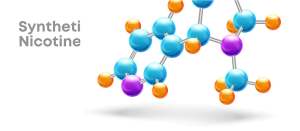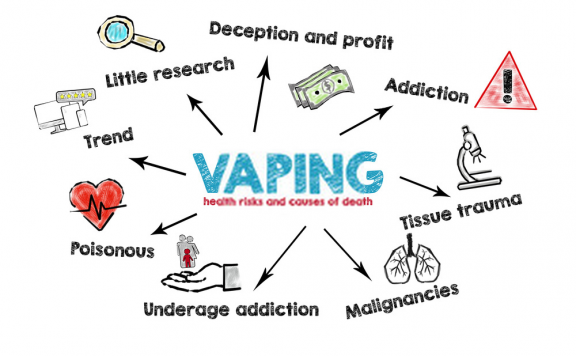
Synthetic Nicotine
What is Synthetic Nicotine?
Synthetic nicotine, often referred to as Tobacco-free Nicotine, represents a groundbreaking development in the world of nicotine products. Unlike its plant-derived counterpart, synthetic nicotine is crafted in laboratories through an intricate chemical process. This innovative substance is chemically identical to natural nicotine found in tobacco leaves, yet it is devoid of the organic compounds typically associated with tobacco.
The genesis of synthetic nicotine dates back over a century, with its application in tobacco-free products like nicotine gums, patches, and other nicotine replacement therapy (NRT) products spanning several decades. The complex synthesis process involves ethyl nicotinate—a compound originating from niacin or Vitamin B3—which undergoes multiple transformations before yielding synthetic nicotine.

Synthetic Nicotine
The vaping industry, despite its rapid evolution over the past 15 years, predominantly uses plant-derived nicotine in its e-liquids. The primary hurdle for adopting synthetic nicotine in the market has been its cost. The intricate manufacturing process and limited production capabilities render synthetic nicotine significantly more expensive than its natural counterpart.
As a result, the economic appeal for e-liquid manufacturers to switch from tobacco-derived nicotine to synthetic alternatives has been minimal, with the lower costs of traditional sources outweighing the potential benefits of change.
The landscape of the nicotine industry is undergoing a notable shift, primarily driven by growing interest and demand for synthetic nicotine. This surge in curiosity is catalyzing significant changes in the market, notably in the reduction of production costs. Manufacturers, in response to this increasing demand, are investing in research and development to streamline their production processes, making it more economically viable. As a result, this once-costly alternative is becoming more accessible to a broader audience, potentially leading to a paradigm shift in the nicotine market. This trend signifies a move towards innovative solutions that could redefine the future of nicotine consumption.
In 2022, around 9000 applications for synthetic nicotine products were submitted to the FDA, mainly from the vaping sector, illustrating a growing interest in this alternative. Despite this surge, its market presence in vape liquids remains relatively minor, with these products still being a rarity.
The transition to this nicotine in vaping products is gradually gaining momentum. The cost and production challenges that have historically favored tobacco-derived nicotine are diminishing. As the production of synthetic nicotine becomes more cost-effective and its market availability increases, we are likely to witness a significant shift in its adoption.
To identify if vape juice contains this nicotine, scrutinize the ingredient list on its packaging. Legally, e-liquids, including disposables, must display their contents accurately. Synthetic nicotine, distinct from natural nicotine, should be labeled specifically. Look for terms like TFN (Tobacco Free Nicotine), TF Nicotine, NTN (Non-Tobacco Nicotine), or simply synthetic nicotine.
These designations indicate the presence of lab-created nicotine, differentiating it from traditional, tobacco-derived nicotine. Be wary of black-market products that may mislabel their nicotine content. Purchasing from reputable sources ensures you get accurately labeled and regulated e-juice, clarifying the type of nicotine used. This vigilance helps consumers understand what they are inhaling and supports informed choices in the vaping community
In conclusion, synthetic nicotine stands as a pivotal innovation in the nicotine industry. It promises a future where vaping and other nicotine products can be manufactured without the ethical and environmental concerns associated with tobacco cultivation. While the shift towards this nicotine in vape liquids is evolving, the potential for it to become the mainstream source in the industry is more palpable than ever. This transition marks a significant step towards a more sustainable and potentially healthier alternative in nicotine consumption.







